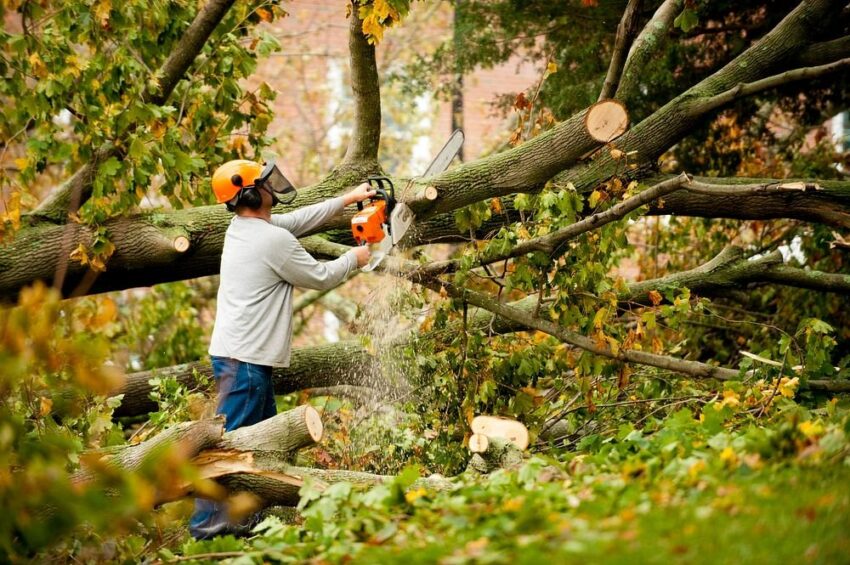Proper tree management is crucial for the health and safety of trees on your property. Tree care enhances the landscape, prevents potential hazards, and increases your property’s value. Whether managing trees for aesthetics or safety, these essential tree management tips will guide you through the best practices.
- Regular Tree Inspections
Routine inspections help identify any issues with your trees before they become serious problems. Look for signs of disease, pest infestations, or structural damage. A professional arborist can provide a thorough assessment and recommend necessary treatments.
- Pruning and Trimming
Pruning is vital for tree health. Trimming helps maintain a desirable shape and size, enhancing the tree’s overall appearance. Proper pruning encourages strong, healthy branches and prevents overgrowth, reducing the risk of branches falling during storms. Be sure to hire a certified arborist for pruning, as improper techniques can harm the tree.
- Proper Watering
Watering is one of the most important aspects of tree care. Trees need sufficient water to maintain healthy growth, especially during dry spells. However, overwatering can be as harmful as underwatering, leading to root rot and other issues.
Water deeply and evenly around the root zone to encourage more profound root growth and improve drought tolerance. During the summer, ensure your trees receive water at least once a week, depending on soil conditions.
- Mulching for Protection
Mulch is an excellent tool for tree management, offering numerous benefits. Applying a 2-4 inch layer of mulch around the tree’s base helps retain moisture in the soil, prevents weeds, and regulates soil temperature, keeping the roots protected and healthy.
Spread mulch evenly, keeping it away from the tree’s bark. This simple step will significantly enhance tree health and growth.
- Fertilization for Growth
Fertilizing your trees ensures they receive the necessary nutrients for optimal growth. A balanced nitrogen, phosphorus, and potassium fertilizer helps maintain healthy foliage and strong root systems. However, avoid over-fertilizing, as this can harm the tree.
Consider soil testing before fertilizing to identify nutrient deficiencies. Proper fertilization will boost your tree’s resilience, helping it withstand diseases, pests, and environmental stressors.
- Pest and Disease Control
Insects and diseases can weaken trees, leading to long-term damage if left unchecked. Regular monitoring of pests like aphids, beetles, and caterpillars is crucial. Also, look for symptoms of fungal infections, such as blackened leaves or lesions on the bark.
Early intervention is key to managing pests and diseases effectively. Consult an arborist to apply appropriate treatments, such as insecticides or fungicides, to protect your trees.
- Protecting Tree Roots
Tree roots are vital for water and nutrient absorption. Avoid compacting the soil around your trees, which can restrict root growth and cause long-term health issues. Keep heavy machinery and foot traffic away from the root zone.
In some cases, installing barriers or root protectors can help safeguard the root system from external damage, especially in areas with frequent construction or landscaping activity.
- Storm Preparedness
Severe weather, such as heavy storms and strong winds, can damage trees and cause harm. To prepare for storms, ensure that trees are structurally sound by removing weak or overhanging branches. If necessary, consider cabling or bracing trees for extra support.
Assess tree stability regularly, especially after heavy rains or winds. Consulting an arborist can help you identify trees at risk of falling and prevent potential damage.
- Planting New Trees
Select species well-suited to your local climate and soil conditions when planting new trees. Proper planting techniques are essential for tree health, including digging a wide enough hole and placing the tree at the correct depth.
Provide enough space for the tree to grow so avoid planting too close to buildings or power lines. New trees need time to establish themselves, so patience is key during the early years.
- Tree Removal When Necessary
While trees can live for decades, some may become a hazard due to disease, damage, or age. It’s best to remove trees before they cause harm. Always have tree removal performed by a professional to ensure safety and efficiency.
A certified arborist can assess whether removal is necessary and help determine the best course of action. In some cases, pruning or cabling may be a better alternative to complete removal.
Consult a Tree Care Professional
Proper tree management is essential for maintaining a safe and healthy environment. Whether dealing with pruning, pest control, or planting, it’s always best to consult a professional arborist for expert care. Contact a certified arborist today to ensure your trees thrive for years!

